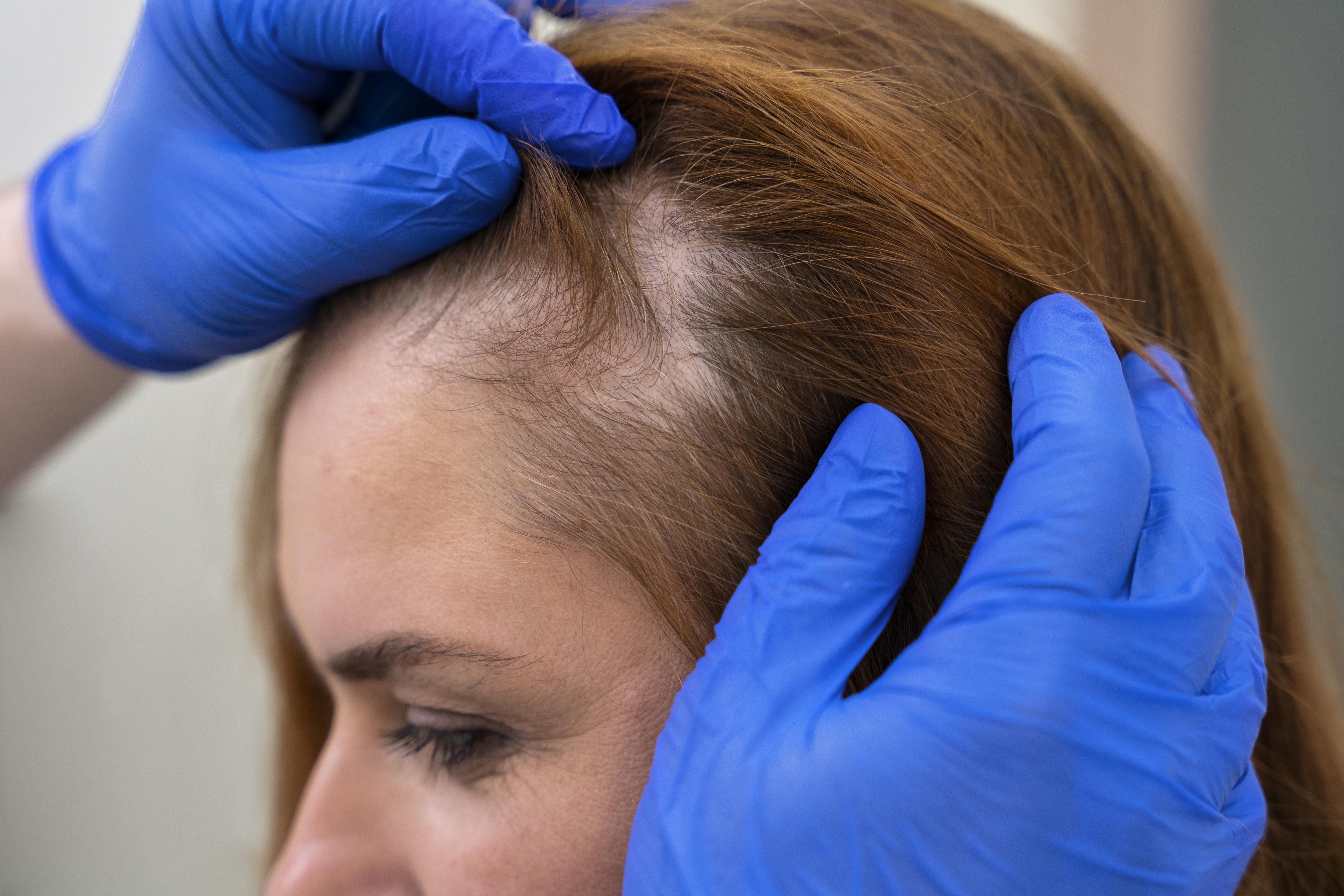
Ever wondered why your once-luscious mane is making a swift exit? What triggers the enigma of hair loss and is there a definitive guide to stop it? Dive into our blog as we demystify the causes of hair loss, its types, and symptoms, and answer the burning question: what is the best way to stop hair loss? Say hello to healthier hair and bid farewell to those vanishing strands – let’s understand the roots of hair loss together.
What is Hair Loss?
Alopecia, commonly known as hair loss, results from disruptions in the body’s natural hair production cycle. It can occur on various body parts but is typically most noticeable on the scalp.
Hair is made of a protein called keratin, produced in hair follicles in the outer skin layer. New hair cells replace old ones, growing about 6 inches a year. What you see as hair is actually dead keratin cells. Adults have around 100,000 to 150,000 head hairs and lose up to 100 daily, which is normal. About 90% of scalp hair is usually growing, with three phases: Anagen (active growth), Catagen (transitional), and Telogen (resting and shedding, followed by new growth).
Different Types of Hair Loss Conditions
Understanding the various types of hair loss conditions is the first step towards healthy and strong locks. Here are 9 different types of hair loss problems that you may be facing:
1. Involutional Alopecia
This type of hair loss is a natural part of ageing. As you get older, more hair follicles enter the resting phase, resulting in shorter and fewer hair on your scalp.
2. Androgenic Alopecia
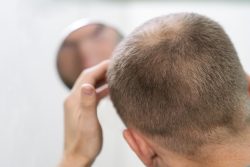
It’s a genetic condition that can affect both men and women. In men, known as male pattern baldness, hair loss can start as early as the teenage years or early 20s, with a receding hairline and thinning at the crown. In women, called female pattern baldness or androgenic alopecia, noticeable thinning typically occurs in their 40s or later, with a general thinning of the entire scalp.
3. Alopecia Areata
This alopecia areata type is characterized by sudden and often patchy hair loss, sometimes leading to complete baldness. The good news is that in about 90% of cases, hair regrows within a few years.
4. Alopecia Universalis
This alopecia results in the loss of all body hair, including eyebrows, eyelashes, and pubic hair.
5. Trichotillomania
It’s a psychological disorder, frequently observed in children, where individuals compulsively pull out their own hair, leading to hair loss.
6. Telogen Effluvium
Temporary hair thinning occurs due to the synchronised entry of many hair follicles into the resting phase. This causes shedding and subsequent thinning of the scalp hair.
7. Scarring Alopecias
These conditions result in permanent hair loss and are often caused by inflammatory skin conditions or disorders that leave scars, preventing hair from regenerating.
8. Traction Alopecia
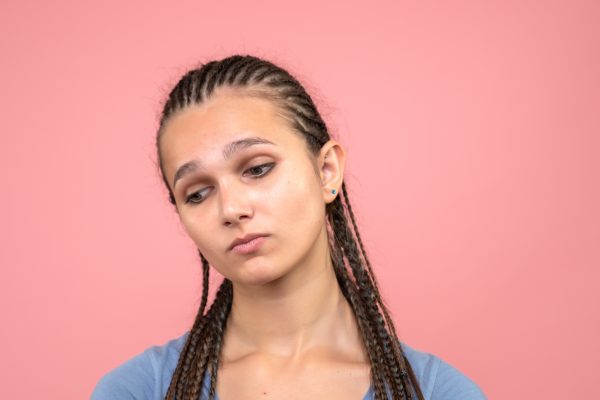
It’s triggered by tightly pulled hairstyles and the use of hot combs, eventually leading to permanent hair loss in affected areas.
9. Central Centrifugal Cicatricial Alopecia
This is one of the most common alopecia types among African women which typically starts as a small bald patch in the centre of the scalp, which gradually enlarges over time.
What are the Causes of Hair Loss?
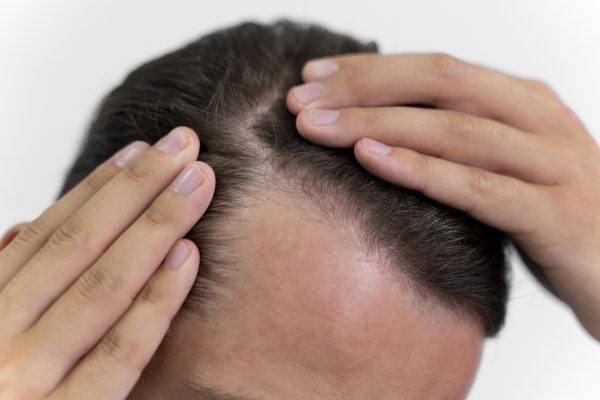
Identifying what causes hair loss is the key to determining whether your hair can be restored or not. Here are some of the main causes of hair loss:
Genetics
Hair loss often has a strong genetic component. If your family has a history of baldness or thinning hair, you may be predisposed to experience it as well. This genetic susceptibility influences the sensitivity of hair follicles to hormones, particularly dihydrotestosterone (DHT). Over time, these follicles can shrink, leading to shorter and finer hair until they eventually cease to produce hair altogether.
Hormonal Changes
Hormonal fluctuations play a significant role in hair loss. For instance, during pregnancy, childbirth, or menopause, women often experience changes in hormonal levels that can contribute to temporary hair loss. In men, an excess of dihydrotestosterone (DHT) – a derivative of testosterone – can lead to the shrinking of hair follicles, eventually causing hair loss. Hormonal imbalances, whether due to medical conditions or medications, can disrupt the natural hair growth cycle.
Medical conditions
Various medical conditions can trigger hair loss. Conditions such as alopecia areata, thyroid disorders, and autoimmune diseases affect the immune system and, in turn, impact hair follicles. Additionally, certain medical treatments like chemotherapy can lead to widespread hair loss. Identifying and addressing the underlying medical issue is crucial for managing or preventing further hair loss caused by these conditions. Regular health check-ups and consultation with healthcare professionals can aid in early detection and intervention.
Strand by Strand: Effective Strategies for Hair Loss Treatment
At Bodycraft Clinic, we understand your hair loss concerns and proudly offer advanced treatments for addressing this issue.
1. GFC Hair Loss Treatment
Growth Factor Concentrate, also known as GFC Hair Treatment, is a highly effective hair loss treatment that employs growth factors produced in your blood. The growth factors are introduced to the hair root during the GFC hair loss treatment by superficially injecting them into the scalp. The GFC therapy encourages thicker and faster-growing hair follicles while also lowering hair loss.
2. QR678 Hair Growth Treatment
QR678 stands for “Quick Response to a Disease which Previously Had No Answer.” A non-surgical hair regrowth technique which encourages hair growth while minimising hair loss. It is a growth factor formulation that is administered via mesotherapy injections into the scalp. By signalling the cells to enter the anagen phase, QR678 encourages the regeneration of dead hair follicles.
View this post on Instagram
3. PRP Hair Regrowth Treatment
PRP Hair Treatment, or platelet-rich plasma, is a medical procedure in which blood is collected, processed, and then injected into the scalp to cure hair loss. Your doctor will extract the plasma from a small amount of your blood using a centrifuge. This plasma is injected into the parts of your head where new hair needs to develop. This procedure only takes a few minutes and is safe because it uses your blood to regenerate hair.
View this post on Instagram
4. Hair Spa for Maintenance
Regular hair spas are essential for maintaining the health of your hair and preventing hair loss problems. These rejuvenating treatments provide a deep conditioning and nourishing experience for your scalp and strands. Hair spas help to strengthen hair follicles, improve blood circulation to the scalp, and combat issues like dandruff and excessive dryness. Hair spa also promotes relaxation, reducing stress levels, which can contribute to massive hair loss. By investing in hair spas, you not only pamper yourself but also ensure that your hair remains strong, shiny, and less prone to damage, ultimately safeguarding against the often distressing issue of hair loss.
Top 10 Symptoms of Hair Loss
It’s not always easy to spot the symptoms of hair loss since it’s a gradual process, so here are some of the most common symptoms you should look out for.
1. Thinning Hair
This is the most common symptom of hair loss. You may notice that your hair is getting thinner and less voluminous.
2. Receding Hairline
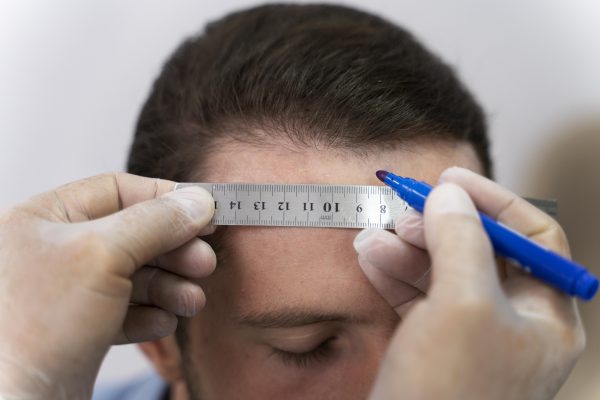
Receding hairline is a common symptom in men, and it can be a sign of male pattern baldness.
3. Widening Partition
Similar to a receding hairline, a widening partition can signify hair loss which is more common among women.
4. Bald Spots
This is a symptom where people lose hair in random patches or spots on their heads.
5. Excessive Shedding
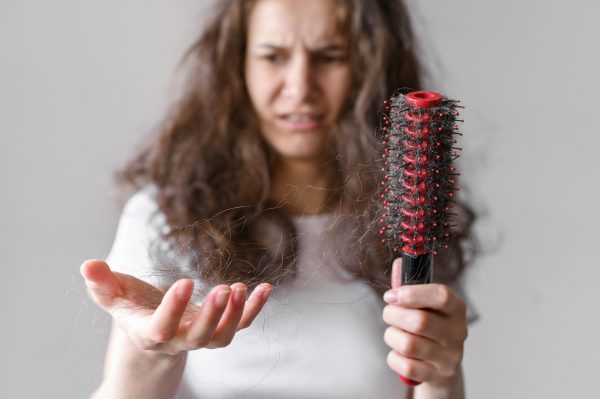
If you’re losing more hair than usual while combing or brushing your hair, this can be a symptom of hair loss.
6. Changes in Texture
Hair loss can alter the texture of your remaining hair. It may become finer, more brittle, or lack the healthy shine it once had. Changes in texture are a noticeable sign of ongoing hair loss.
7. Itchy or Painful Scalp
An itchy or painful scalp can be indicative of an underlying issue leading to hair loss. Conditions like dandruff, fungal infections, or even excessive dryness can contribute to this discomfort.
8. Sudden Hair Thinning
Unlike gradual thinning, sudden and noticeable thinning may indicate a more acute issue, such as stress, illness, or an abrupt hormonal imbalance. Monitoring abrupt changes in thickness is crucial for early detection.
9. Lack of Regrowth
After hair falls out, new growth should replace it. If you observe a lack of regrowth in areas where hair has shed, it may signify an interruption in the hair growth cycle, potentially due to underlying health concerns.
10. Changes in Nail Health
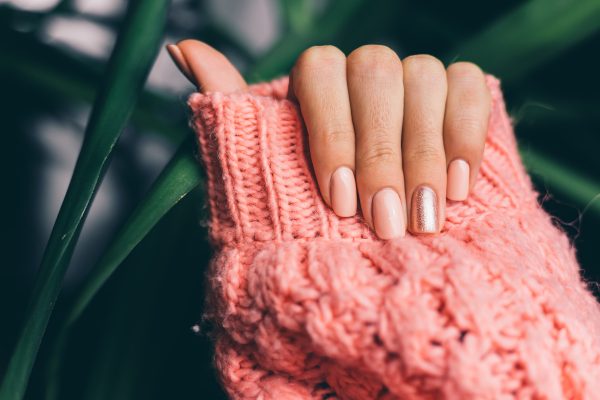
Surprisingly, changes in nail health can sometimes signal underlying issues leading to hair loss. Brittle, thin, or slow-growing nails may be correlated with similar conditions affecting hair follicles. Regular observation of both hair and nail health is advised for a comprehensive view of overall well-being.
When to See a Trichologist?
If you’re experiencing noticeable and persistent hair loss, it’s advisable to schedule an appointment with a healthcare professional or trichologist. While it’s normal to shed some hair daily, significant hair thinning or bald patches, especially if accompanied by other symptoms like itching, redness, or changes in your scalp’s texture, may be indicative of an underlying medical condition.
The Takeaway
It’s important to note that the key to successful hair loss treatment lies in identifying the root cause. At Bodycraft, our team of industry experts adhere to safe, proven procedures, ensuring that you receive the best care tailored to your unique needs. Book an appointment with your nearest Bodycraft Clinic as we are committed to helping you regain confidence and achieve optimal hair health. Your path to revitalised hair starts here.
FAQs Around Hair Loss
1. How much hair fall is normal?
On average, losing 50 to 100 hairs per day is considered normal. Factors like washing frequency, combing habits, and seasonal changes can influence daily hair shedding. If you notice a significant increase or other concerning symptoms, consulting a healthcare professional is recommended.
2. Is it possible to regrow my hair?
Regrowing hair is possible in some cases, especially with early intervention. FDA-approved medications, such as minoxidil and finasteride, have shown effectiveness. Advanced treatments like hair transplant surgery can also be considered for more permanent results.
3. Which vitamins are good for hair growth?
Vitamins crucial for hair health include biotin, vitamin A, vitamin E, and vitamin D. Additionally, minerals like iron and zinc play a role. A balanced diet with these nutrients promotes healthy hair growth, but it’s advised to consult with a healthcare professional for personalised advice.
4. What is the cost of hair fall treatment?
The cost of hair fall treatment varies widely, depending on the type of treatment. Over-the-counter products may be affordable, while surgical interventions like hair transplants can be more expensive. Consultation with a healthcare provider can provide a clearer estimate based on individual needs.
5. Is hair loss treatment permanent?
The permanence of hair loss treatment varies. Medications can manage hair loss, but discontinuation may lead to regression. Surgical procedures like hair transplants offer more permanent results, yet individual responses vary. Regular follow-ups and maintenance may be necessary.
6. Can hair fall be stopped?
In many cases, hair fall can be halted or slowed with appropriate treatment. Identifying the underlying cause, whether genetic, hormonal, or environmental, is crucial for implementing effective preventive measures.
7. Can genetic hair loss be cured?
Genetic hair loss, such as male or female pattern baldness, can be managed but not fully cured. Treatments like medications and hair transplants can slow progression and promote regrowth, but the underlying genetic predisposition remains.
8. Can hair colour or keratin treatment cause hair loss?
While uncommon, excessive use of harsh chemicals or heat during hair treatments can damage hair and lead to breakage. Allergic reactions or inflammation may contribute to temporary hair loss. It’s essential to follow proper procedures and consult a professional to minimise risks.
9. What is 1 stage of hair loss?
One stage of hair loss is the initial phase where hair starts to thin. This can be subtle, with minimal visible changes. Recognizing and addressing hair loss at this stage increases the likelihood of successful intervention.
10. How do I know my hair loss type?
Consulting with a dermatologist or healthcare professional is the best way to determine your specific hair loss type. They may conduct a thorough examination, consider medical history, and, if necessary, order additional tests to pinpoint the cause and recommend suitable treatment.
11. How can I regrow my lost hair?
Regrowing lost hair involves various approaches. Topical treatments like minoxidil, oral medications like finasteride, and advanced methods like hair transplant surgery are options. A personalised plan, often developed with the guidance of a healthcare professional, can help determine the most effective regrowth strategy based on individual needs and circumstances.